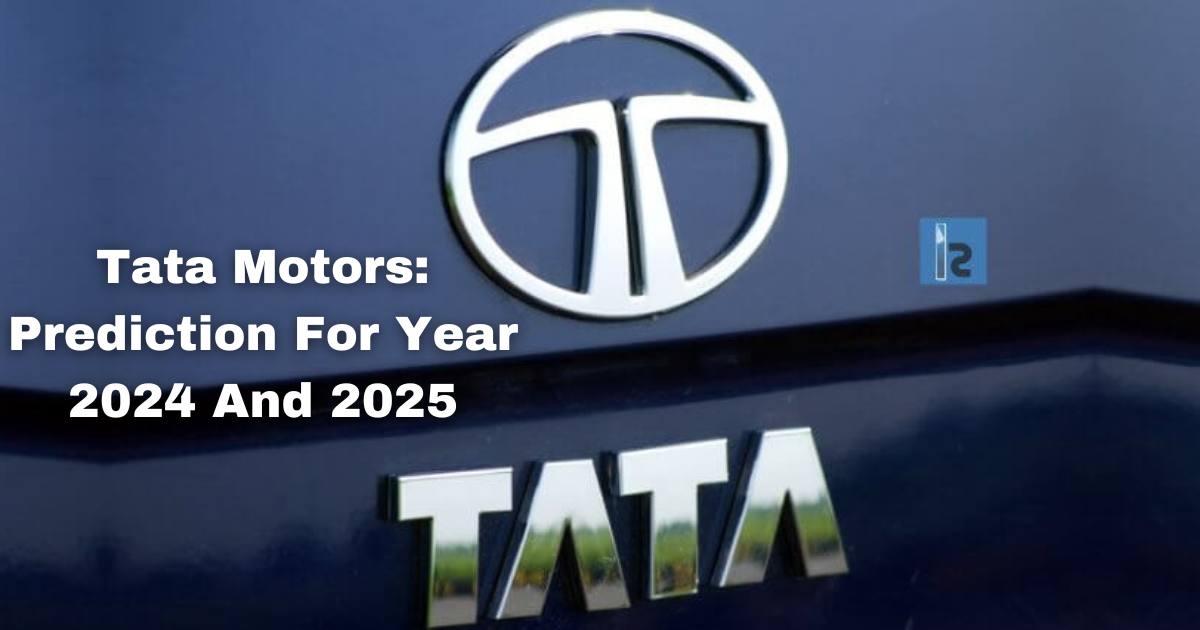Tata Motors: A Fundamental Analysis And Prediction For Year 2024 And 2025
Introduction
Tata Motors is one of the leading automobile manufacturers in India, with a dominant position in the commercial vehicle segment. In this blog, we will analyze the fundamentals of Tata Motors and discuss its key financial indicators, ownership pattern, and recent performance.
Commercial Vehicle Segment
Tata Motors holds the number one position in the commercial vehicle segment in India, with a market share of 21% and the highest total revenue. It is also the second-largest player in the passenger vehicle segment and the number one player in the electric vehicle segment. Additionally, Tata Motors owns Jaguar Land Rover (JLR), an iconic brand that contributes 64% to the company’s total revenue. The vehicle financing segment is a smaller contributor, accounting for 1% of the total revenue.
Ownership Pattern
The ownership pattern of Tata Motors is as follows: promoters hold 46.38% of the company’s shares, followed by mutual funds at 6.93%, insurance companies at 7.4%, and foreign portfolio investors at 13%. The management team, led by Chairman N. Chandrasekaran, holds a 1.6% stake in the company.
Financial Performance
Tata Motors has shown improvements in its financial performance in recent years. The company’s earnings per share (EPS) growth rate has been consistently positive, with a remarkable 200% growth rate in the past four quarters. The sales growth rate has also remained strong, with a consistent 20% increase over the same period. These positive indicators suggest a bright future for the company.
Technical Analysis
When it comes to technical analysis, Tata Motors has displayed some interesting chart patterns. In 2020, the stock witnessed a flat base pattern, followed by a breakout at around 114 levels, leading to a 20% move. A subsequent breakout at the 154 level resulted in a doubling of the stock price to 300 levels. The stock is currently forming a new base, and if it breaks out above the 480 level, it could potentially see a move to 680. Traders can keep an eye on these levels for potential trading opportunities.
Tata Motors Frequently Asked Questions :
Who is the biggest competitor of Tata Motors?
Tata Motors faces robust competition in the automotive industry, with its primary rival being Mahindra & Mahindra. Both companies are prominent players in the Indian automotive market and compete across various segments, from passenger vehicles to commercial vehicles. Mahindra & Mahindra, like Tata Motors, has a diverse product portfolio, particularly excelling in the SUV and utility vehicle segments. The rivalry between these two Indian automotive giants is characterized by constant innovation, technological advancements, and a keen focus on meeting the evolving needs of the market. Beyond the domestic market, Tata Motors encounters global competition from established players like Hyundai, Toyota, and General Motors in different regions, adding an extra layer of complexity to its competitive landscape. The dynamics of this competition are influenced by factors such as product quality, pricing strategies, market share, and the ability to adapt to industry trends, making it imperative for Tata Motors to stay agile and innovative to maintain its position in the fiercely competitive automotive market.
What are the major challenges of Tata Motors?
Tata Motors, like many automotive companies, faces a range of challenges that impact its operations and strategic decisions. One significant challenge is the dynamic nature of the global automotive industry, characterized by evolving consumer preferences, stringent regulatory standards, and rapid technological advancements. Adapting to these changes while maintaining competitiveness in terms of product innovation and sustainability poses a continual challenge for Tata Motors. Economic factors, including fluctuations in commodity prices and currency exchange rates, can impact production costs and profitability. Additionally, the company must navigate the complexities of geopolitical and trade uncertainties, as it operates in diverse markets worldwide. The transition to electric and sustainable mobility solutions poses both an opportunity and a challenge, requiring significant investments in research and development and infrastructure. Moreover, intense competition, not only from domestic rivals like Mahindra & Mahindra but also from global players, necessitates strategic positioning and differentiation. To address these challenges, Tata Motors needs to maintain a proactive approach, investing in research and development, enhancing operational efficiency, and staying attuned to market dynamics to ensure long-term success in the highly competitive automotive landscape.
Conclusion
In conclusion, Tata Motors is a fundamentally sound company with a dominant position in the Indian automobile market. Its strong financial performance, ownership pattern, and technical indicators make it an interesting stock to watch.
Disclaimer: The information is only for information purpose only. It is always recommended to consult with certified financial experts before making any investment decisions. Follow busymoneyfreak.com

